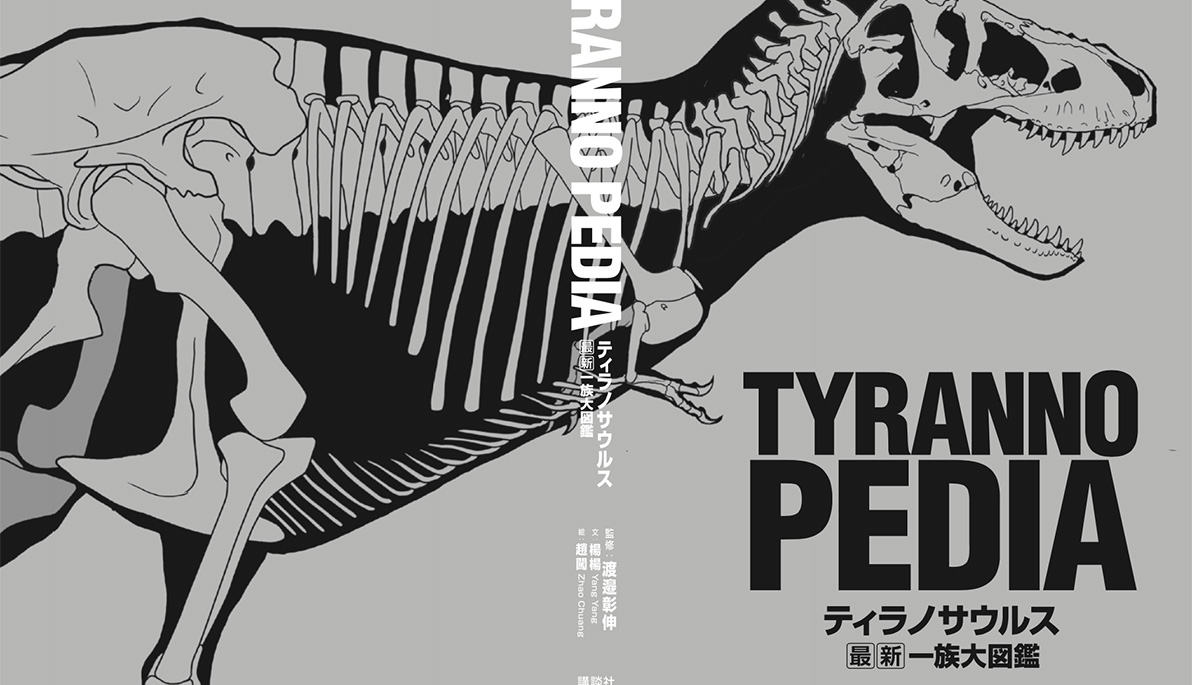News
Changing the Perception of T. rex
May 5, 2020
Dinosaur films like Jurassic Park and The Land Before Time depict Tyrannosaurus rex (T. rex) as a blood-thirsty, pre-historic villain. Now, Assistant Professor of Anatomy at NYIT College of Osteopathic Medicine Akinobu “Aki” Watanabe, Ph.D., is helping to change that narrative with the new dinosaur encyclopedia Tyrannopedia.
Launched on April 15 in Japan,* the book includes highlights and biographies from 15 influential paleontologists and offers more than just the traditional species survey commonly found in most encyclopedias. Notably, Tyrannopedia provides a unique perspective on T. rex’s evolutionary narrative and positions the misunderstood and oft-reviled dinosaur as a protagonist.
The Box sat down with Watanabe to learn more about how the new book came to fruition.
Tell us about your role in the creation of Tyrannopedia.
As the supervisor for the book, I was involved in several aspects of the project from original planning to final edits, kind of like a film director. These tasks included developing the book’s concept, curating the topics and species to cover, writing some of the chapters, designing some of the images, and as a paleontologist myself, fact-checking and editing the text for accuracy and clarity. In addition to the publisher in Japan (Kodansha), I also worked with the artist Zhao Chuang and scientific writer Yang Yang from the company PNSO in China.
How did all these paleontologists get involved, and what was it like to collaborate with them?
I invited 15 leading paleontologists from around the world to write about their careers, including how they became a paleontologist and their research. These scientists have published on the biology of Tyrannosaurus rex and the grand evolutionary story of dinosaurs. Despite their busy lives, they were enthusiastic about contributing to the book so they made my job much easier! I wanted Tyrannopedia to show the sheer diversity and passion of scientists, so I’m very happy with how these first-person accounts clearly demonstrate this to the readers.
Why is it important for people to view T. rex as the protagonist? In doing this, what unique perspective does the book offer?
One of my goals was to create a new type of dinosaur encyclopedia that goes beyond your typical survey of various dinosaur species. I believed that one way to achieve this is to make a scientific book that is more story-driven. This is when I thought of featuring T. rex, which is the most well-known and studied dinosaur, as the main character in a grand evolutionary tale of dinosaurs. What’s more, we’ve learned so much about T. rex and its relatives just in the last decade or two, so I was able to use T. rex to introduce nearly all of the cutting-edge research being done in dinosaur science, such as “how fast did T. rex grow?,” “how hard did T. rex bite?,” or even “what can fossilized feces of T. rex tell us about what it ate?”
What was the most surprising finding about the tyrannosaur family?
As I hinted earlier, the 21st century so far has seen an explosive growth in what we know about tyrannosaurs (T. rex and its close relatives). Just in the last 20 years, the tyrannosaur family has grown two-fold, with an exponential increase in new species. Because of these new fossils, we now know that early tyrannosaurs were small (think dog-sized), agile, and feathered. Over tens of millions of years, its members evolved to become the colossal predators with bone-crushing bites and an astronomical growth rate. (T. rex is thought to have grown up to approximately 4.5 pounds per day!) These new faces and modern views of tyrannosaurs are beautifully illustrated by Zhao Chuang throughout the book.
*Tyrannopedia is currently only available in Japanese, but English versions may be available at a later date.


_Thumb.jpg)


